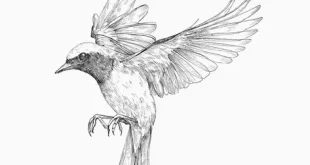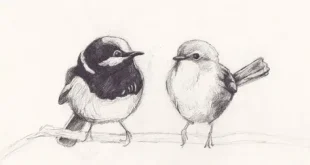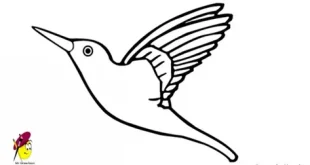The Graceful Northern Pintail: Nature’s Elegant Waterfowl
1. A Distinctive Appearance and Elegant Features

Best Northern Pintail Birds Males are especially striking, its colour is brown head, a white breast, and a long white stripe extending from the back of the neck down to the sides. Their sleek gray bodies and glossy greenish-black tail feathers add to their allure, making them one of the most elegant waterfowl species.
Females, on the other hand, display a more camouflaged appearance with mottled brown plumage, allowing them to blend seamlessly into marshy habitats while nesting.
Both sexes are equipped with narrow, bluish-gray bills and grayish legs, adapted perfectly for dabbling and filtering food in shallow waters.
2. Habitat Preferences and Geographic Distribution Best Northern Pintail Birds

The Best Northern Pintail Birds is a highly adaptable migratory species, inhabiting diverse ecosystems across the globe. During the breeding season, they are commonly found in **northern such as Alaska, Canada, United States, and parts of Europe and Asia. Pintails prefer open wetlands, shallow ponds, flooded meadows, and grasslands that provide abundant food and nesting grounds.
In winter, these birds embark on long migratory journeys, traveling thousands of miles toward warmer southern regions. They can be spotted in southern North America, Central and South America, Africa, and southern Asia during this period.
Their ability to thrive in various climates demonstrates their exceptional adaptability. However, the Northern Pintail relies heavily on healthy wetland ecosystems, making them particularly vulnerable to habitat loss caused by urbanization, agriculture, and climate change.
3. Diet, Feeding Behavior, and Social Traits
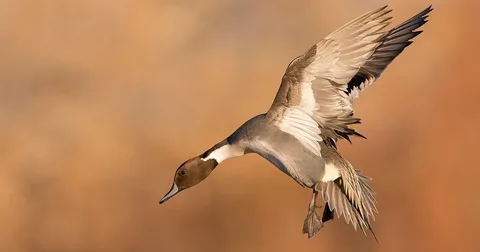
The Best Northern Pintail Birds is primarily a dabbling duck, meaning it feeds on the surface or just below the water rather than diving deeply. Their diet consists of a diverse range of food sources depending on the season and habitat:
- Plant material: Seeds, grasses, aquatic plants, and cereal grains
- Insects & invertebrates: Beetles, snails, larvae, and crustaceans
- Occasional small fish and amphibians during breeding months
Pintails feed by dipping their heads into shallow waters while keeping their tails upright — a distinctive “dabbling” pose often observed in wetlands. During migration and wintering periods, they gather in large flocks, sometimes numbering in the thousands, creating breathtaking spectacles for birdwatchers.
However, competition for food intensifies in shrinking wetlands, making their survival increasingly dependent on the availability of rich feeding grounds.
4. Breeding, Nesting, and Migration Patterns Best Northern Pintail Birds
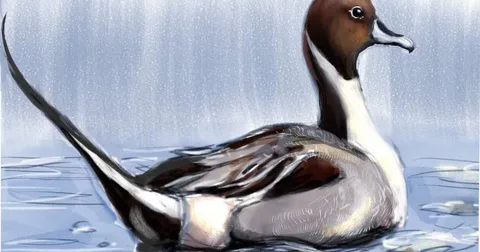
Breeding season for Best Northern Pintails Birds typically begins in late spring and early summer, with males performing graceful courtship displays that involve calling, preening, and swimming around females to gain their attention. Once paired, females take on most of the nesting responsibilities.
Interestingly, Northern Pintails prefer nesting on dry, open grasslands rather than directly on the water, unlike many other duck species. They create shallow ground nests lined with grass, feathers, and down for insulation. A typical clutch consists of 6 to 10 eggs, which the female incubates for about 22 to 24 days.
After hatching, ducklings are highly independent, leaving the nest within hours to forage alongside their mother. They grow quickly, developing flight feathers within 6 to 7 weeks.
They are known to travel thousands of miles annually, making them one of the longest-distance migratory ducks. Their incredible endurance enables them to move seamlessly between breeding and wintering grounds, making them a vital part of multiple ecosystems across continents.
5. Conservation Challenges and Ecological Importance
Despite their widespread distribution, Northern Pintail populations face significant challenges. Over the past few decades, their numbers have declined sharply due to:
- Wetland destruction caused by agriculture, urban development, and drainage projects
- Climate change, leading to altered rainfall patterns and reduced breeding habitats
- Hunting pressures in some regions, particularly along migratory routes
- Pollution from pesticides and industrial runoff affecting water quality
Conservation organizations are working diligently to protect pintail populations by restoring wetlands, regulating hunting practices, and preserving migratory corridors. Protecting these birds ensures the survival of countless other wetland-dependent species, as pintails play an essential role in maintaining ecological balance.
As natural seed dispersers and contributors to wetland health, their decline could trigger broader environmental impacts. Supporting sustainable wetland management and enforcing conservation policies are crucial for safeguarding the future of this magnificent species.
Graceful Beauty of Northern Pintail Birds
The Northern Pintail bird is one of the most elegant and graceful waterfowl species found worldwide. Known for its slender neck and long pointed tail, it is easily recognizable in flight or on the water. Males display a stunning combination of brown, white, and gray plumage, while females show softer, mottled tones. These birds prefer open wetlands, lakes, and shallow ponds, where they can easily feed and nest. Their diet includes seeds, aquatic plants, and small insects that support their healthy growth and energy. Northern Pintails are also strong migratory birds, traveling across continents in search of favorable climates and abundant food resources. Their beauty and grace make them one of the most admired ducks among birdwatchers and wildlife photographers.
Habitat, Behavior, and Importance in Nature
Northern Pintail birds are commonly found in North America, Europe, and parts of Asia during different seasons. They thrive in open water habitats with plenty of vegetation that offers both food and protection. During winter, they migrate to warmer regions, forming large flocks that create a mesmerizing view across wetlands. Their behavior is gentle, and they often mix peacefully with other duck species. Northern Pintails play a vital ecological role by helping maintain wetland ecosystems through seed dispersion and nutrient cycling. These birds also serve as indicators of environmental health, as their population changes reflect habitat quality. Conservation programs are essential to protect them from threats like habitat loss and pollution. Through global efforts, bird lovers continue to cherish the Northern Pintail’s remarkable charm and environmental significance.
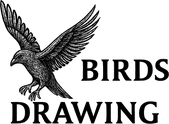 Birds Drawing Birds Drawing
Birds Drawing Birds Drawing

